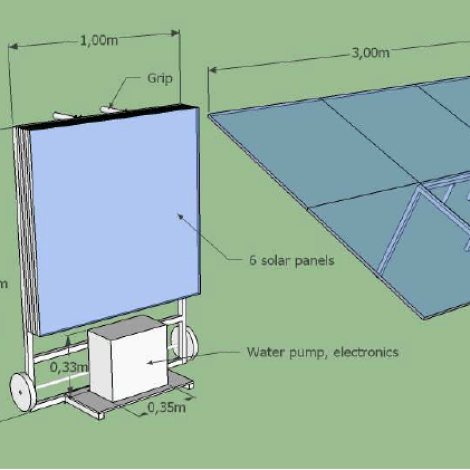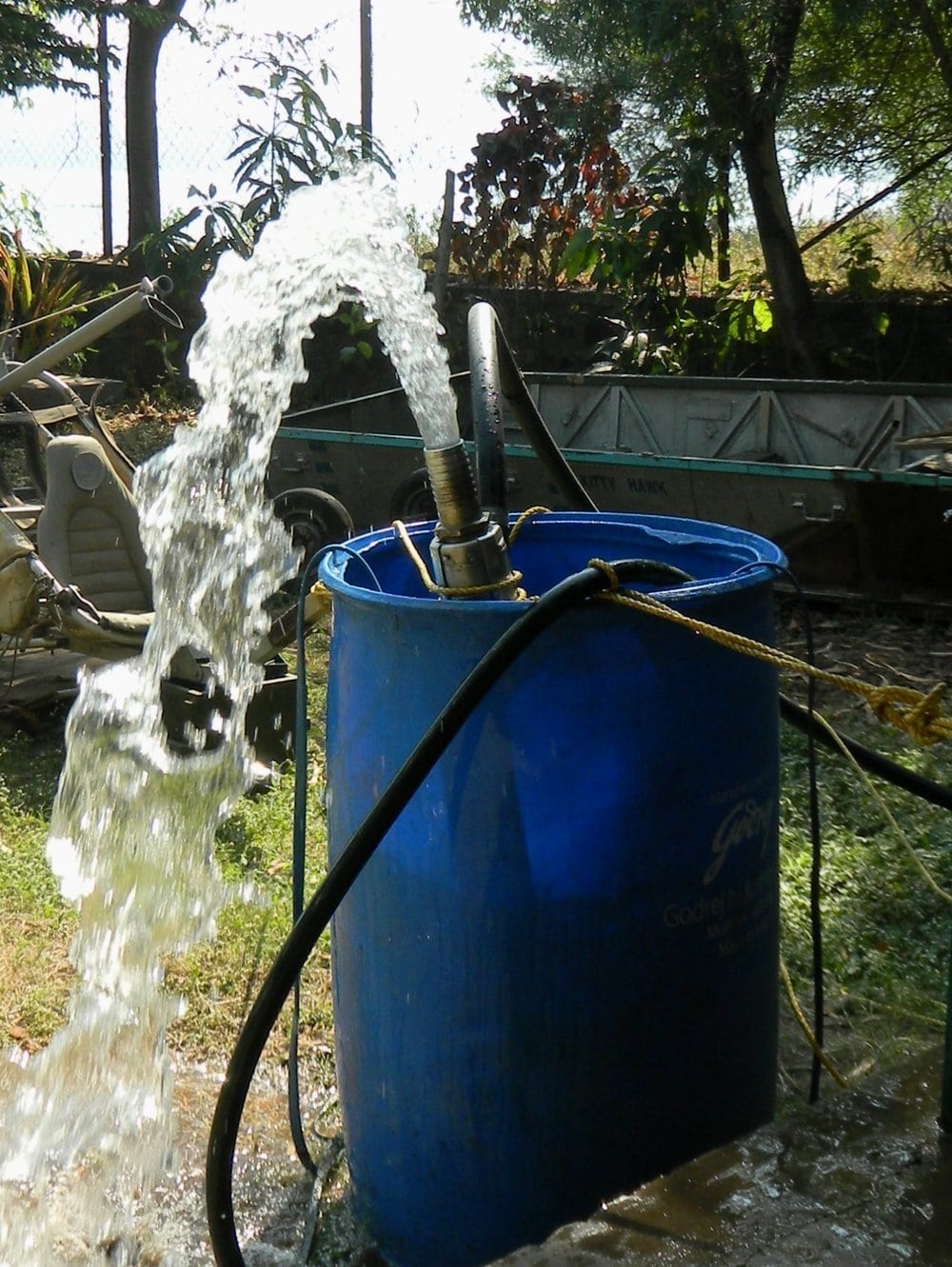Inventors have responded with thoughtful, detailed ideas for Greenpeace’s challenge to design a clean-tech irrigation pump to replace diesel-powered pumps on farms in the southern Indian state of Bihar. At stake are €30,000 in prizes for the winners of this contest that closes Nov. 15th. More than 150 notepad sketches, full-color art, digital renderings, photos and onscreen reams of calculations populate the challenge’s online home so far.
[See our coverage: Gallery: 15 concepts to replace diesel-powered water pumps on Indian farms]
From those, judges of the Energy [R]evolution Challenge have named two solar powered water pumps as promising early submissions. Both designs meet many of the contest’s criteria: their costs are comparable to or less than those of diesel pumps, they run on renewable energies and they are somewhat portable.

First Early Bird Prize
The Simple Solar Pump for India takes first place in the early bird competition. The design features a submersible pump powered with a solar panel array that folds for transport. The pump can be assembled and repaired with materials available locally in Bihar. This design sprang from an online collaboration between Eric Jensen, an agricultural engineer in Canada, and Vivek Mundkur, a retired engineer in India. “It’s an idea built upon experience and solid analysis, with potential to rapid prototype and move to mass production,” said Dr. Robert Yoder of IDE, a member of the challenge’s jury that chose this design.

Second Early Bird Prize
A modified, off-the-shelf pump mounted on a hand cart and powered by six custom solar panels, called the Solar-Panel-Powered Portable Water Pump, takes the second early bird prize. The designer, Balázs Gábor Nagy, got his start building furniture, audio hardware, cosmetics and other goods at home in communist Hungary in the 1980s.
“A few years ago I made a custom designed solar collector to heat the water of the family pool and actually I’m building my own solar panels,” Nagy says.
“A friend of mine told me about this opportunity, she said: ‘you will whomp this up in a minute!’ I read about the challenge and I thought it suits me. I like renewable energy and environment protection. I’m about building my solar panels now and last year I assembled an irrigation pump at my parent’s house (not solar),” Nagy says.
Crowdsourcing works
Nagy took advice from comments posted on his original submission to the contest and tweaked his idea to make the pump easier to manufacture. The challenge’s crowdsourced format seems to have benefited both winning design teams, in fact. Mundkur and Jensen met through the challenge’s site after submitting their own designs, and they have responded to comments from the design community.
What’s next
The community and the jury will elect the winners after submission closes on the 15th. Greenpeace will present awards at a ceremony in Patna, the capital of Bihar, on December 12th. The winners will then meet with funders and local experts to organize prototyping and in-field beta testing. In that way, Bihar farmers will offer feedback before the designs go to manufacture. Greenpeace will kickstart market entry by training young entrepreneurs to use, service, and maintain the pumps. The result could be new small businesses and cleaner, cheaper irrigation on southern Indian farms.
Related resources
Gallery: 15 concepts to replace diesel-powered water pumps on Indian farms
Ideas have streamed into Greenpeace’s challenge to reimagine the renewable energy irrigation pump and win €30,000 to develop the design.
E4C Solutions: A bicycle-powered irrigation pump for Kenyan farmers
Alex Odundo created and manufactures a pedal-powered irrigation pump for farmers in his home country of Kenya.

